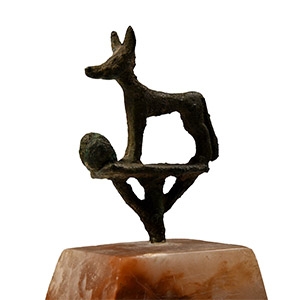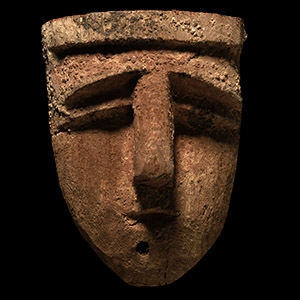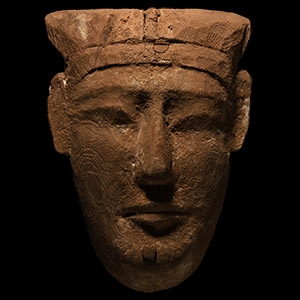Home > Auctions > 5 - 9 December 2023
Ancient Art, Antiquities, Natural History & Coins
Auction Highlights:
Ex Charlie Chaplin collection.
Private New York State collection, U.S.A.
Acquired from a North American auction 27 October 2009.
Private collection of Professor Kenneth Graham, London, UK.
Accompanied by the original catalogue page.
Ex Phillipps collection, with old labels to verso.
Private collection of Mr T.H., Norfolk, UK.
Cf. similar in the collection of the British Museum under accession no.EA58105.
The djed pillar signifies the concepts of 'permanence' and 'stability' and was a common funerary amulet from the Old Kingdom onwards. It was first associated with the gods Ptah and Sokar, but later became a symbol of Osiris, representing the god's backbone. In this context, the djed pillar appears in Chapter 155 of the Book of the Dead, concerned with the resurrection of the deceased.
Part of an old collection dating back to the 19th century.
Ex property of a gentleman, acquired before the 1980s.
Private collection of Mr T.H., Norfolk, UK.
Cf. Petrie, W.M.F., Amulets. Illustrated by the Egyptian Collection in University College, London, 1914, pl.XXVII, no.152b, for a similar example.
Acquired in Egypt in the early 20th century.
Private collection of Mr T.H., Norfolk, UK.
Cf. similar in the collection of the British Museum under accession no.EA495.
In ancient Egypt, it was common for small obelisks like this one to be placed on either side of the entrance to private tombs. Typically inscribed on one side only, these obelisks held great solar religious significance and were closely associated with the cult of the sun-god Re. They symbolised the ancient Egyptians' belief in the rebirth of the deceased, with the moment of revivification being characterised by the individual's face being illuminated by the rays of the rising sun. It was said that, at that moment, the deceased was able to "open their sight to see the sun-god," as one religious text explains.
North American gallery, 1981-1990s.
with Pierre Bergé & Associés, Paris, France, 1st December 2007, lot 384.
London collection, 2016.
Accompanied by an academic report by Egyptologist Paul Whelan.
This lot has been checked against the Interpol Database of stolen works of art and is accompanied by search certificate no.11942-209839.
Cf. Paget, R.F.E. and Pirie, A.A., The Tomb of Ptah-hetep, ERA II, London, 1898, pl.XLI, for a similar offering list.
From an early 20th century collection.
Ex UK collection.
Ex Ancient Art, London N14, UK.
Private collection of Mr T.H., Norfolk, UK.
Accompanied by a previous dealer's certificate of authenticity.
See Taylor, J.H., Death and the Afterlife in Ancient Egypt, London, 2001, for discussion of the tomb figurines.
Part of an old collection dating back to the 19th century.
Ex property of a gentleman, acquired before the 1980s.
Private collection of Mr T.H., Norfolk, UK.
Cf. similar in the collection of the British Museum under accession no.EA55722, the nude figure of Meryrahashtef.
Ex S.M. collection, Israel.
Ex Ancient Art, London N14, UK.
Private collection of Mr T.H., Norfolk, UK.
Accompanied by a previous dealer's certificate of authenticity.
Cf. similar item in considerably worse condition in the collection of the British Museum under accession no.1881,0830.519.
Old Dutch collection, acquired prior to 1985.
Ex Netherlands ancient art gallery.
Ex Artemission, London SW5, UK.
Private collection of Mr T.H., Norfolk, UK.
Accompanied by a previous dealer's certificate of authenticity and invoice.
Cf. Andrews, C., Amulets of Ancient Egypt, London, 1994, item 12(d).
Osiris is a deity who represents both death and fertility and is commonly regarded as the quintessential god of rebirth. Though he was once a mortal ruler, as a deceased entity his domain was the Underworld. Abydos was the primary centre of Osiris’ cult, where a renowned yearly celebration of the god was held. Statues of Osiris were dedicated at temples throughout Egypt to ensure the god's protection and blessings.
Believed to have been collected (1899-1914) and in an early 20th century collection, with some references to Psamtik I, and a German funded expedition.
Ex Ludwig Borchardt, Heliop.
Private collection of Mr T.H., Norfolk, UK.
Accompanied by a handwritten note from Ludwig Borchardt.
Cf. Tiribilli, E., The bronze figurines of the Petrie Museum from 2000 BC to AD 400, GHP Egyptology 28, London, 2018, p.184, cat.no.259, for a less elaborate Wepwawet standard terminal.
Wepwawet, the canine god, is strongly linked with Abydos and kingship. His name means 'Opener of the Ways' and may have had military connotations as someone who clears the path for his king. In funerary texts, Wepwawet guided the dead through the Underworld. The image of the god on a standard, as seen in this example, was carried in processions associated with Osiris and kingship. The balloon-like object, known as shed-shed, is mysterious but may have symbolised the royal placenta, which was considered the king's 'double'.
Acquired 1970s-1996.
Property of a North American collector.
London collection, 2016.
See Taylor, J.H., Death and the Afterlife in Ancient Egypt, London, 2001, for discussion.
Acquired 1970s-1996.
Property of a North American collector.
London collection, 2016.
See Taylor, J.H., Death and the Afterlife in Ancient Egypt, London, 2001, for discussion.
1 - 12 of 2409 LOTS

.jpg)


.jpg)

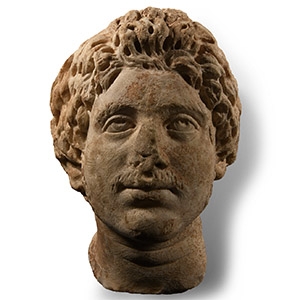
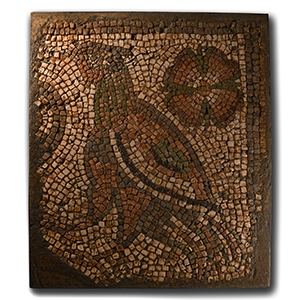
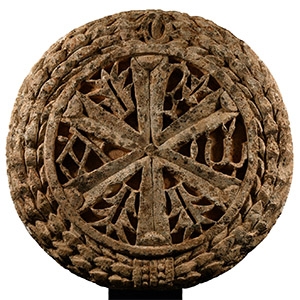


.jpg)


.jpg)
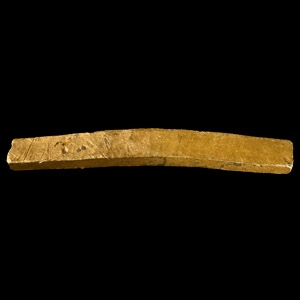
.jpg)
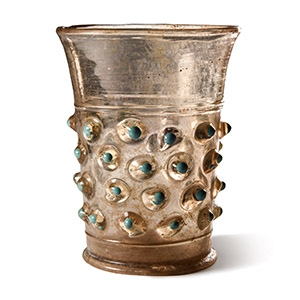

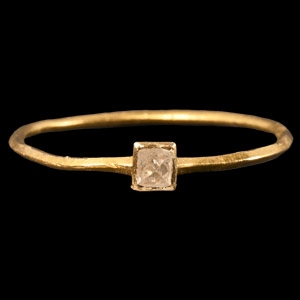

.jpg)
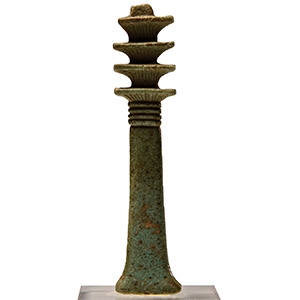
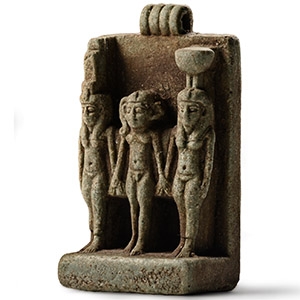
.jpg)

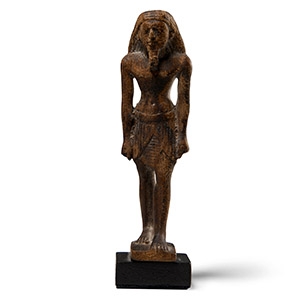
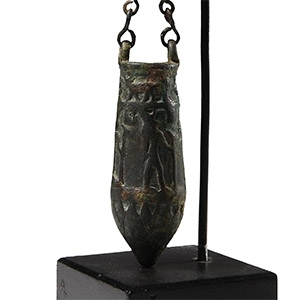
.jpg)
